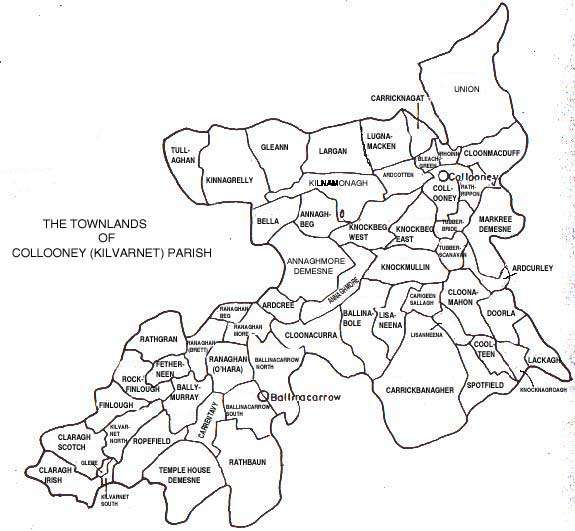| 6.
Note References to Previous Residences
 As you are studying former documents or your transcribed notes,
have you picked up on residential clues? For example, in Ireland there are multiple
layers of jurisdictions including:
As you are studying former documents or your transcribed notes,
have you picked up on residential clues? For example, in Ireland there are multiple
layers of jurisdictions including:
The four provinces: Connaught, Leinster, Munster,
and Ulster.
The 32 counties with the jurisdiction starting
in the twelfth century.
The 327 baronies that are unheard of today in
Ireland but in the mid-1800s were an important jurisdiction.
The 2,508 civil parishes that frequently run over
the borders of both barony and county boundaries. Church of Ireland
parishes normally conform to the civil parishes, but Roman Catholic
parishes do not as they are much larger. The Roman Catholic Church,
due to the Reformation of the sixteenth century, had to adapt to
a new structure centered around towns and villages. County Londonderry,
for example, had 46 civil parishes.
Finally there are 60,462 townlands in Ireland.
These are the most important jurisdiction for the poor, humble people
of Ireland. It is the designation of the rural area. Griffith's
Valuation has land numbers at the left that can identify the
town lands. Yet the land might be one part of the townland and the
residence in another. This is important because it can lead to the
name of the estate of the landowner who was leasing the land to
the tenant. This then would lead to records of the ancestor among
the landlord's records. The townland will identify the precise origin
of the ancestor. It is amazing that such a little country of Ireland can have so many jurisdictions. Below is a sample of the townlands of Collooney.

The Irish census records, however, do not make it easy to locate
the exact place even if found on the census. This is because the
census records are numbered according to the Poor Law Union
in which the person lived (the last jurisdiction a researcher must
be aware of in Ireland).
As illustrated for Ireland, any residence clues you find are very
important. This is true of any foreign country.
7.
Watch for Neighbors and Friends
This is pretty obvious. Go back and check any document you have
on your ancestor to see who signed as an officiator in a small town
marriage, who was a witness to a christening, and who was a witness
to a legal transaction. Now try to learn more about those specific people by searching county or regional, ethnic or occupational histories. Also look at compiled records such as biographies, compiled genealogies and pedigrees at online sources such as www.ancestry.com; familysearch.or or any compiled genealogies in printed form from the specific country. Another way is to perform a Preliminary Survey on some of the neighbors and friends. There are many times when it is the friends and neighbors that guide you to the sources of your own ancestor. |